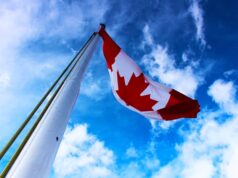
In Greenland, it also rains more and more frequently in the winter – and that causes large amounts of ice to melt. This is shown by a new study by the German Geomar Helmholtz Center for Ocean Research and Columbia University. The study was published in the magazine „The Cryosphere“.
The German-American research team was, according to their own information, „surprised“ when it discovered that rain was falling during the long Arctic winter. At the beginning of the research phase, rain fell twice a year for a short time in the winter, so at the end of the 2012 research period, it had already rained twelve times in winter.
Region is considered a problem child
The researchers, who compared satellite imagery with data from 20 automated weather stations, found that in 300 cases between 1979 and 2012 such precipitation resulted in ice melt. Although most precipitation occurred in the summer, winter increased.
Greenland’s huge ice sheet is closely monitored because it contains huge amounts of frozen water. If all the ice melts, sea levels would rise seven meters, threatening coastal areas around the world. In Greenland, however, snow usually falls in winter, which compensates for the melting of the ice during the summer.
The entire region has long been regarded as a problem child because global warming is progressing twice as fast there as in the rest of the world.



